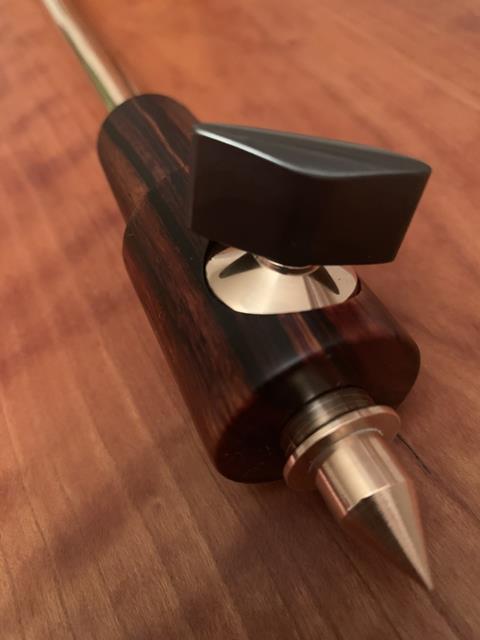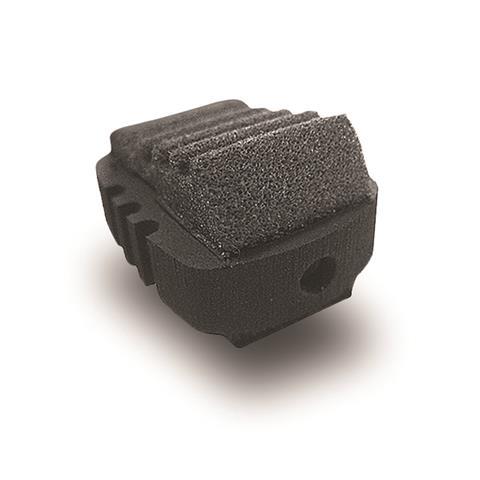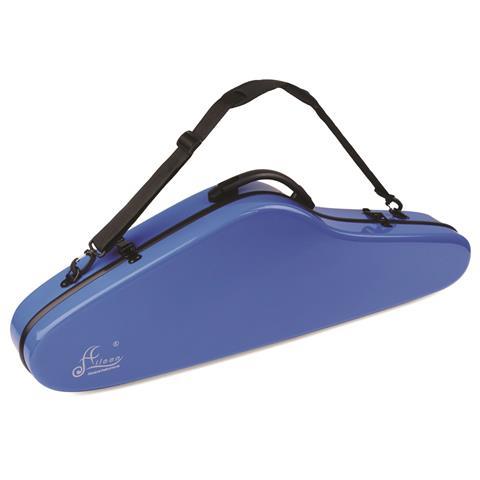Straight to the point

Can changes to an overlooked part of the cello anatomy help improve your sound?
Matt Schiebold, founder of Cube Acoustics, and cellist with the Toledo Symphony Orchestra in Ohio, US, set out to create an endpin that matched the rest of his instrument and set-up for quality and precision. ‘I was curious as to why people thought carbon fibre, steel or any other material was best suited for making endpins,’ he says. ‘It seemed to me that everything going on down there is just as important as the bridge and the soundpost.’
He collaborated with a specialist foundry and designed a prototype using an alloy engineered for minimal acoustic impedance and which he claims boosts the sound waves’ longitudinal frequency. ‘After I had fitted this endpin to my own cello, the instrument just exploded with sound,’ Schiebold says. ‘A patent lawyer advised me to come up with an easily repeatable experiment that demonstrated its properties. I struck five different endpins and measured how long it took the sound to die away. Of those made from carbon fibre, steel, stainless steel and titanium, the maximum time was 20 seconds.’ His, he says, rang for over two minutes.
Next, Schiebold turned his attention to the endpin’s housing at the foot of the instrument, usually a metal and wood construction with a gasket made from cork or rubber to eliminate buzzing. ‘These materials made up for the unbelievably imprecise tolerances most endpin housings are made to. I couldn’t understand why this was the case, when luthiers spend so much time and energy working in such great detail on every other aspect of the instrument.’ However, eliminating the need for a vibration-absorbent housing did not come cheap. ‘Reducing the tolerances down to hundredths of a millimetre isn’t simple,’ he says. ‘It involves very gradually removing material by hand to prevent the metal from deforming. All this attention paid to materials and precision makes for an endpin and housing that enhances the sound of the instrument and increases the number of audible overtones. It can also suppress and even eliminate wolf notes.’
Cube Acoustics endpin from $400
info@cube-acoustics.com
www.cube-acoustics.com
Hidden hearing

Measuring 20 x 30 x 22mm and weighing just 6g, this high-definition pre-polarised condenser element microphone fits under the fingerboard of the instrument, obscured from both audience and performer. Although designed for studio use, it offers some damping of nearby instruments while the woven silicone cable minimises noise created against the instrument body.
Remic violin/viola microphone from €599
info@remic.dk
www.remic.dk
Plastic fantastic
This case’s fibre-reinforced plastic shell is scratch-resistant and, the manufacturers claim, can be easily recycled. Available in black, red, blue and white, the case includes a hygrometer built into the velvet interior and weighs just 2kg. Inside there’s room for two bows, a shoulder rest and numerous other accessories.
Aileen Music Air violin case from £130
sales42@aileenmusic.com
www.aileenmusic.com












































No comments yet